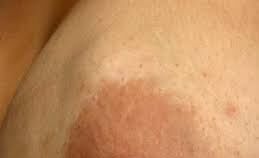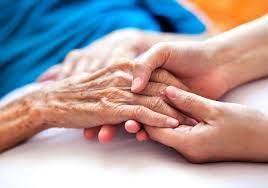Exploring Cancer Treatment Options: From Surgery to Immunotherapy
Cancer is an insidious disease that affects millions of people around the world every year. It occurs when abnormal cells grow and divide uncontrollably, invading and destroying healthy tissue. In many cases, these rogue cells travel to other parts of the body where they can cause tumors or other malignant growths. Cancer can affect almost any part of the body, including organs such as the lungs, breasts, and prostate. Depending on its type and stage, cancer can be fatal in some cases. Fortunately, early detection and treatment are key in successfully fighting cancer and there has been tremendous progress in recent years in terms of treatments available for those affected by this disease. Please keep reading for details on the following topics:
Forms of cancer
Causes of cancer
Signs and symptoms of cancer
Stages of cancer
Types of cancer
How to reduce the risk of cancer
How cancers are managed
Palliative care
Possible complications of cancer and treatment

CANCER begins when cells in the body undergo a series of changes:
- Abnormal Growth: Normal cells start producing new abnormal cells.
- Rapid Division: These abnormal cells grow and divide at an accelerated rate compared to healthy cells.
- Uncontrolled Growth: The cells lose the ability to regulate their growth and continue to multiply unchecked.
- DNA Errors: Errors occur in the cell’s DNA repair process, leading to further mutations.
- Resistance to Cell Death: Abnormal cells evade programmed cell death (apoptosis) and persist, accumulating more mutations.
- Spread: These mutated cells can then invade nearby tissues and spread to other parts of the body, forming tumors or affecting organ function.
It can potentially develop in any part of the body, leading to a wide range of symptoms and health complications.
Benign tumors are typically non-cancerous growths that:
- Remain dormant, not spreading to other parts of the body.
- Do not grow back after surgical removal.
Malignant tumors, on the other hand, are cancerous growths that:
- Have the potential to spread to nearby tissues or other parts of the body.
- Can regrow after surgical removal if not entirely eliminated.
Causes of cancer
It can arise from various factors, including:
- Genetic predisposition: Inherited mutations may increase susceptibility to certain types of cancer.
- Environmental factors: Exposure to carcinogens such as tobacco smoke, UV radiation, pollutants, and certain chemicals.
- Lifestyle choices: Unhealthy habits like smoking, excessive alcohol consumption, poor diet, and lack of physical activity contribute to cancer risk.
- Infections: Certain viruses and bacteria, such as HPV and Helicobacter pylori, can lead to cancer development.
-
Hormonal factors: Hormone imbalances or therapies, such as hormone replacement therapy or oral contraceptives, may increase cancer risk.
Signs and symptoms of cancer

Signs and symptoms can vary depending on the type, location, and stage of the disease. Common indicators include:
- Presence of a lump or mass that can be felt under the skin.
- Abnormal bleeding, such as from the rectum, vagina, or when coughing.
- Persistent cough or hoarseness.
- Unexplained weight loss.
- Changes in bowel habits or stools.
- Difficulty swallowing or persistent indigestion.
- Persistent fatigue or weakness.
- Skin changes, such as new moles or changes in existing ones.
- Persistent pain that doesn’t resolve with typical treatments.
- Changes in bladder or bowel habits.
- Persistent fever or night sweats.
- Swelling or enlargement of lymph nodes.
- Neurological symptoms like seizures or headaches.
Stages of cancer

It is categorized into stages to describe the extent of its spread and severity. The stages typically range from 0 to 4, with higher numbers indicating more advanced disease. Here’s a general overview:
Stage 0: Also known as carcinoma in situ, the cancer is confined to its original location and has not invaded nearby tissues or spread.
Stage 1 cancer refers to the earliest stage of the disease, when the cancer is still relatively localized and has not yet spread to other parts of the body. During this stage, the tumor may be small in size and is often the most treatable. Treatment options may include surgery, radiation, chemotherapy, or a combination of these therapies, depending on the individual case. Early detection and intervention are key for successful treatment outcomes.
Stage 2 cancer is a serious medical condition that can affect anyone at any age. It is a form of cancer that has spread beyond the primary location and may involve nearby lymph nodes or organs. Treatment for stage 2 cancer typically involves surgery, chemotherapy, radiation, or a combination of these treatments. Depending on the type of cancer and its location, the doctor may recommend additional treatments such as targeted therapy or immunotherapy. Regardless of the approach, it is important to receive prompt and effective treatment to improve the chances of successful outcomes.
Stage 3 cancer is a serious health condition that can cause significant physical and emotional distress. It is the most advanced form of cancer and is characterized by the presence of cancerous cells that have spread throughout the body. Treatment for stage 3 cancer typically involves aggressive chemotherapy, radiation, and/or surgery, and is often accompanied by a range of side effects. It is important for individuals diagnosed with stage 3 cancer to work with an experienced medical team and to follow a comprehensive treatment plan to ensure the best possible outcome.
Stage 4 cancer is the most advanced form of cancer and can be difficult to treat. It is the stage in which cancer has spread from the original site to other parts of the body, making it difficult to treat and often resulting in a poorer prognosis. Treatment options for stage 4 cancer can vary depending on the type of cancer, its location, and the patient’s health, but may include surgery, chemotherapy, immunotherapy, radiation therapy, and/or targeted drug therapy. With the right treatment plan, many patients can experience a good quality of life even with stage 4 cancer.
Forms of cancer
Here are the main types:
Carcinoma: Arises from epithelial cells covering internal and external body surfaces.
Carcinoma is a type of cancer that affects the cells of the skin, lungs, and other tissues. It is the most common form of cancer and can present in many different forms, from malignant melanoma to breast cancer. It is important to identify and treat carcinoma as early as possible to avoid further complications. If left untreated, it can spread to other parts of the body and become life-threatening. Treatment options for carcinoma depend on the type of cancer, but may include surgery, radiation, chemotherapy, or other targeted therapies. Carcinomas are formed by cells that cover the inner and outer surfaces of the body.
Adenocarcinoma
Adenocarcinoma is a type of cancer that starts in the lining of organs and can spread to other parts of the body. It is the most common type of lung cancer and is also found in the pancreas, prostate, breast, and other organs. Adenocarcinoma is caused by abnormal cell growth, which can be caused by genetic mutations, environmental factors, and lifestyle choices. Treatment depends on the location and stage of the cancer, but may include surgery, chemotherapy, and radiation. These cancers are formed in cells that produce fluid or mucus.
Breast Cancer: Affects the breast tissue, commonly occurring in women but can also affect men. Risk factors include family history, hormonal factors, and lifestyle factors like alcohol consumption and obesity. Screening methods include mammograms and self-exams.
Colon Cancer: Develops in the colon or rectum, usually starting as benign polyps that can become cancerous over time. Risk factors include age, family history, diet high in red or processed meats, obesity, smoking, and alcohol consumption. Screening methods include colonoscopies and stool tests.
Prostate Cancer: Affects the prostate gland in men, usually developing slowly and remaining confined to the gland initially. Risk factors include age, family history, and race. Screening methods include prostate-specific antigen (PSA) blood tests and digital rectal exams.
Basal Cell Carcinoma: The most common type of skin cancer, typically occurring on sun-exposed areas of the skin. It often appears as a pearly or waxy bump and rarely metastasizes. Risk factors include sun exposure and tanning bed use. Treatment involves surgical removal or other methods to destroy the cancerous cells.
Squamous Cell Carcinoma: Another common type of skin cancer, usually appearing as a red, scaly patch or wart-like growth. It can metastasize if left untreated but is usually curable if caught early. Risk factors are similar to basal cell carcinoma and include sun exposure and tanning bed use.
Stomach Cancer: Develops in the lining of the stomach and can spread to nearby lymph nodes and organs. Risk factors include infection with Helicobacter pylori bacteria, smoking, obesity, a diet high in smoked, salted, or pickled foods, and a family history of stomach cancer. Symptoms include abdominal pain, indigestion, nausea, and unintentional weight loss.
Intestinal Cancer: Includes cancers of the small intestine and large intestine (colon). Risk factors for colon cancer are similar to those mentioned above for colon cancer. Symptoms can include changes in bowel habits, blood in the stool, abdominal pain, and unintended weight loss.
Lung Cancer: Arises from the tissues of the lungs, commonly associated with smoking but can also occur in non-smokers. Risk factors include smoking, exposure to secondhand smoke, exposure to radon gas, asbestos, and other carcinogens. Symptoms include coughing, shortness of breath, chest pain, and unintentional weight loss.
Bladder Cancer: Develops in the lining of the bladder and can spread to nearby organs and lymph nodes. Risk factors include smoking, exposure to certain chemicals, chronic bladder infections or irritation, and family history. Symptoms include blood in the urine, frequent urination, and pain during urination.
Kidney Cancer: Originates in the kidneys and can spread to other organs and lymph nodes. Risk factors include smoking, obesity, high blood pressure, and certain genetic conditions. Symptoms can include blood in the urine, abdominal pain, and a lump or mass in the abdomen.
Sarcoma: Originates in connective tissues like bone, cartilage, fat, or muscle.
Sarcoma is a rare form of cancer that develops in the body’s connective tissues. It affects both adults and children and can occur in any part of the body. Unfortunately, sarcoma can be difficult to diagnose, since it can grow in any part of the body and present a variety of symptoms. Treatment options can vary greatly depending on the type and stage of sarcoma, and may include chemotherapy, radiation, and surgery. Early diagnosis and treatment can help improve outcomes and quality of life for those affected by sarcoma. These cancers are formed in the bone and soft tissues such as muscle, fat and blood vessels.
Osteosarcoma
Osteosarcoma is a type of cancer that starts in the bones. It is most commonly found in adolescents and young adults and is the most common type of bone cancer in children. Osteosarcoma is caused by abnormal cell growth in the bones and can spread to other parts of the body. Symptoms of osteosarcoma include pain in the affected area, swelling, and difficulty in moving the affected area. Treatment for osteosarcoma usually involves surgery, chemotherapy, and/or radiation therapy. Early detection and treatment of osteosarcoma can improve outcomes and prognosis.
Leukemia: Occurs in blood-forming tissues like bone marrow, leading to abnormal blood cell production.
Leukemia is a type of cancer that affects the blood and bone marrow. It is caused by an abnormal increase in the number of white blood cells, which leads to an overproduction of abnormal cells. These abnormal cells can interfere with the production of normal blood cells, leading to anemia, infection, and other serious health problems. Treatment options may include chemotherapy, radiation therapy, and stem cell transplantation. With early detection and proper treatment, patients with leukemia have a good chance of surviving and leading a normal life.
Lymphoma: Affects the lymphatic system, including lymph nodes and lymphatic organs.
Lymphoma is a type of cancer which affects the lymphatic system, a vital component of the immune system. It is most commonly diagnosed in people between the ages of 15 and 40 but can occur at any age. There are two main types of lymphoma: Hodgkin lymphoma and non-Hodgkin lymphoma. Symptoms of lymphoma can include swollen lymph nodes, fever, night sweats, and unexplained weight loss. Treatment for lymphoma can vary depending on the type and stage, but may include chemotherapy, radiation therapy, and/or targeted drug therapies. Lymphoma can be a very serious condition, so it is important to speak to your doctor if you have any of the symptoms listed above.
Cancer that begins in the lymphocytes (white blood cells that help fight diseases)
Lymphoma is a type of cancer that affects the lymphatic system. It is divided into two main groups: Hodgkin’s lymphoma and non-Hodgkin’s lymphoma. Hodgkin’s lymphoma, also called Hodgkin’s disease, is a type of cancer that develops from cells called Reed-Sternberg cells. Non-Hodgkin’s lymphoma is a group of cancers that starts in the lymphocyte cells, which are part of the immune system. Both types of lymphoma can cause similar symptoms, such as swollen lymph nodes, fever, and weight loss. However, the treatments used for each type of lymphoma are different.
Multiple myeloma
Multiple myeloma is a bone marrow cancer that affects white blood cells. These cancerous cells accumulate in the bone marrow and can cause inflammation, bone pain, and anemia. The cause of multiple myeloma is unknown, but it is more common in those over the age of 65 and is more often seen in African American and Asian populations. Symptoms can vary but may include bone pain, fatigue, increased risk of infection, and a decrease in red blood cells. Treatment options may include chemotherapy, radiation, or stem cell transplants. With early diagnosis and proper treatment, many patients are able to live a long and healthy life. This cancer begins in plasma cells. It builds up in the bone marrow and forms tumors in bones all over the body.
Melanoma
Melanoma is the most serious form of skin cancer and is caused by the uncontrolled growth of pigment-producing cells in the skin. It is most often found in areas that have been exposed to the sun, such as the face, arms, and legs. Melanoma can spread to other parts of the body, making it important to identify and treat it early. Symptoms of melanoma include changes in the size, shape, or color of a mole, or development of a new mole. It is important to take preventive measures against skin cancer, such as wearing sunscreen and protective clothing, avoiding tanning beds, and monitoring your skin for any changes. Early detection is key to successful treatment. This type of cancer begins in specialized cells called melanocytes that helps give the skin it’s color. They usually affect the brain and spinal cord.
Germ cell tumors
Germ cell tumors are a type of cancer that affects the reproductive cells of humans and other animals. These tumors are generally categorized by their location and the type of cells they affect. They can occur anywhere in the body but most commonly affect the ovary, testis and the brain. Germ cell tumors can be benign or malignant, meaning that they can grow and spread to other parts of the body. Symptoms of germ cell tumors can vary depending on the location and type of the tumor, but general symptoms include pain, swelling, and changes in bowel movements. Treatment for germ cell tumors typically involves surgery, radiation, and chemotherapy.
Neuroendocrine tumors
Neuroendocrine tumors (NETs) are a rare type of cancer that occur in the neuroendocrine cells of the body. They occur in the cells that release hormones into the body. NETs can occur anywhere in the body, but most commonly occur in the digestive system and lungs. NETs are often slow-growing and can sometimes be difficult to diagnose, as their symptoms can be similar to other conditions. However, once diagnosed, NETs can be treated with surgery, chemotherapy, and other therapies. Additionally, NETs can be monitored with regular tests to ensure that they don’t progress or spread.
How to reduce the risk of cancer

Reducing the risk involves adopting healthy lifestyle habits and minimizing exposure to known risk factors. Here are some strategies to reduce the risk of cancer:
- Avoid tobacco: Tobacco use, including smoking and chewing tobacco, is a leading cause of various types of cancer. Quitting smoking and avoiding secondhand smoke can significantly reduce cancer risk.
- Maintain a healthy weight: Being overweight or obese increases the risk of several types of cancer, including breast, colorectal, and prostate cancer. Aim to achieve and maintain a healthy weight through a balanced diet and regular physical activity.
- Eat a healthy diet: Consume a diet rich in fruits, vegetables, whole grains, and lean proteins. Limit intake of processed and red meats, sugary foods, and high-calorie snacks. Aim for a diet that is low in saturated fats and rich in nutrients, vitamins, and antioxidants.
- Exercise regularly: Engage in regular physical activity, such as brisk walking, jogging, swimming, or cycling, for at least 30 minutes most days of the week. Regular exercise helps maintain a healthy weight, strengthens the immune system, and reduces cancer risk.
- Limit alcohol consumption: Alcohol consumption is associated with an increased risk of several types of cancer, including breast, liver, and colorectal cancer. Limit alcohol intake to no more than one drink per day for women and two drinks per day for men.
- Protect your skin: Protect your skin from the harmful effects of ultraviolet (UV) radiation by wearing sunscreen with a high SPF, seeking shade, wearing protective clothing, and avoiding tanning beds and excessive sun exposure.
- Get vaccinated: Vaccines are available to prevent certain infections that can increase the risk of cancer, such as human papillomavirus (HPV) and hepatitis B virus (HBV). Talk to your healthcare provider about getting vaccinated against these viruses.
- Screening and early detection: Participate in recommended cancer screening tests, such as mammograms, Pap smears, colonoscopies, and skin checks. Early detection can lead to early treatment and better outcomes.
-
Know your family history: Understand your family history of cancer and discuss it with your healthcare provider. Some cancers have a hereditary component, and knowing your family history can help assess your risk and determine appropriate screening and prevention strategies.
How cancers are managed

Management involves a combination of treatments aimed at controlling the disease, relieving symptoms, and improving quality of life. Here are some common management approaches:
- Surgery: Surgical removal of tumors is often the primary treatment for localized cancers. It aims to remove cancerous tissue and may be followed by other treatments like chemotherapy or radiation therapy.
- Chemotherapy: Chemotherapy uses drugs to kill cancer cells or prevent their growth and division. It can be administered orally or intravenously and may be used alone or in combination with other treatments.
- Radiation therapy: Radiation therapy uses high-energy radiation to target and destroy cancer cells. It can be delivered externally or internally, depending on the location and type of cancer.
- Immunotherapy: Immunotherapy boosts the body’s immune system to help fight cancer. It may involve drugs that target specific proteins on cancer cells or stimulate the immune system to recognize and attack cancer cells.
- Targeted therapy: Targeted therapy drugs are designed to specifically target cancer cells while minimizing damage to healthy cells. They work by interfering with specific molecules involved in cancer cell growth and survival.
- Hormone therapy: Hormone therapy is used to treat cancers that are hormone-sensitive, such as breast or prostate cancer. It works by blocking the production or action of hormones that fuel cancer growth.
- Palliative care: is a specialized approach focused on enhancing the quality of life for individuals facing serious or life-limiting illnesses, such as cancer. It provides holistic support, addressing physical symptoms, emotional needs, social concerns, and spiritual well-being. Palliative care teams, consisting of interdisciplinary healthcare professionals, collaborate to alleviate pain, manage symptoms, and promote comfort for patients and their families. While palliative care may not offer a cure, it aims to relieve suffering, improve overall well-being, and empower patients to make informed decisions about their care.
-
Clinical trials: Participation in clinical trials offers access to innovative treatments and therapies that are being studied for their effectiveness in treating cancer. These trials may involve new drugs, treatment combinations, or experimental approaches.
Possible Complications of cancer and its treatments can vary widely depending on the type of cancer, its stage, and the specific treatments received. Some potential complications include:
- Side effects of treatment: Chemotherapy, radiation therapy, surgery, and other cancer treatments can cause side effects such as fatigue, nausea, hair loss, pain, and increased risk of infections.
- Weakened immune system: Cancer and its treatments can weaken the immune system, making individuals more susceptible to infections and illnesses.
- Nutritional deficiencies: Cancer and its treatments may affect appetite and digestion, leading to malnutrition and nutritional deficiencies.
- Pain: Cancer-related pain can result from the tumor itself or from treatments such as surgery, radiation therapy, or chemotherapy.
- Fatigue: Cancer-related fatigue is a common and often debilitating symptom that can persist even after treatment ends.
- Emotional and psychological effects: Cancer diagnosis and treatment can cause significant emotional distress, anxiety, depression, and other psychological symptoms.
- Secondary cancers: Some cancer treatments, particularly radiation therapy and certain chemotherapy drugs, can increase the risk of developing secondary cancers later in life.
- Blood clots: Cancer can increase the risk of developing blood clots, which can lead to serious complications such as pulmonary embolism or stroke.
- Lymphedema: Surgery or radiation therapy for certain types of cancer can damage the lymphatic system, leading to swelling and fluid buildup known as lymphedema.
-
Organ dysfunction: In advanced stages of cancer, tumors can interfere with the function of vital organs, leading to organ failure and other complications.
WHEN TO SEEK URGENT MEDICAL CARE
It’s important to seek urgent medical care if you experience any of the following symptoms:
- Severe or persistent pain that is not relieved by over-the-counter medications.
- Difficulty breathing or shortness of breath.
- Sudden or severe headaches, especially if accompanied by confusion, vision changes, or loss of consciousness.
- Persistent nausea or vomiting, especially if it’s accompanied by severe abdominal pain.
- High fever (above 101°F or 38°C), especially if it’s accompanied by chills or sweating.
- Sudden weakness or numbness in the face, arm, or leg, especially if it’s on one side of the body.
- Unexplained weight loss, especially if it’s accompanied by other symptoms like fatigue or loss of appetite.
- Changes in bowel or bladder habits, such as blood in the stool or urine, or difficulty urinating.
- Severe allergic reactions, such as swelling of the face, lips, tongue, or throat, or difficulty breathing.
- Suicidal thoughts or behaviors.
Disclaimer: The information provided in this content is for general informational purposes only. It is not intended as medical or healthcare advice, diagnosis, or treatment. Always seek the advice of a qualified healthcare professional with any questions you may have regarding a medical condition or healthcare decisions.

